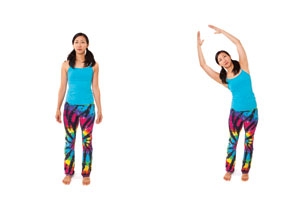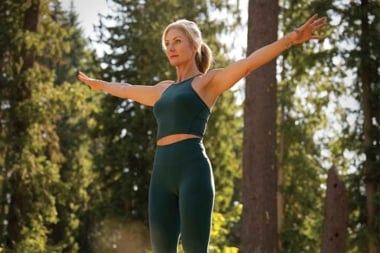
Yoga increases flexibility, but it's also beneficial for those with type 2 diabetes. Doing yoga regularly can help reduce blood sugar and cholesterol levels.
Routinely inviting relaxation into our day is important for all of us, particularly when facing emotional or physical challenges. If you’re managing type 2 diabetes, make time to check in with your physical well-being with yoga and mindfulness.
Living an active lifestyle
The Canadian Society for Exercise Physiology recommends at least 150 minutes of aerobic exercise per week, plus at least two sessions of resistance exercise per week for adults between the ages of 18 and 64. The Canadian Diabetes Association supports these recommendations.
Yoga does not require much special equipment and, at its core, encourages participants to check in and become in tune with their physical states. The Canadian Diabetes Association notes that yoga is one of the many ways people with diabetes can live an active lifestyle.
Incorporating yoga
It is recommended that you consult your health care practitioner if you are including yoga in your diabetes management plan. People with heart disease or blood pressure concerns should also consult a professional on how to adapt yoga for their needs. Consider working with a yoga therapist or teacher who has experience working with people diagnosed with type 2 diabetes.
While researchers acknowledge that more systematic research is needed, there is recent evidence that regular yoga practice can help people with diabetes reduce fasting glucose (blood sugar) and cholesterol.
Suggested poses
Yoga, meditation, and breath work are tools that many people use to tune into their bodies. Try out these yoga postures (asanas) to begin to incorporate yoga into your daily healthy living routine. These postures are great for beginners.
Consider joining a class in your community. It is possible to find classes for beginners, and some communities even offer introductory classes geared toward people with type 2 diabetes.
Always ask your health care practitioner for contraindication information, for more information, and before starting any new exercise program.

| Mountain Pose (beginning posture) This pose is the foundation of many yoga postures. You can practice Mountain Pose anywhere you can stand.
| Nitambasana (side stretch) This posture brings awareness to the lateral planes of the body and helps to open the shoulders.
|
Reclining Spinal Twist

Yoga twists are thought to help improve digestion.
- Begin by lying down on your back with your legs extended away from you.
- Bend your knees and bring your feet flat to the ground. Then, bring your knees toward your chest.
- Extend your arms out to the sides in a T position.
- Keep your jaw loose and the back of your neck long.
- Use your core to drop your knees to the right on an exhalation. You can squeeze a blanket or block between your thighs if you prefer.
- Take 3 to 5 breaths.
- Roll your legs back up to centre, and repeat on the other side.
Big Toe Pose (forward fold)

The ancient yogis believed this posture helps stimulate the kidneys and improves digestion. People with high blood pressure should seek advice from a health care practitioner before practising inversions.
- Begin in Mountain Pose.
- On an exhalation, fold forward from your hips, bringing your head and body in front of you.
- Grasp your big toes with your index and middle fingers. Bend your knees to help you, if needed. As a modification, you can pass a yoga strap under both feet at the big toe mounds and hold onto the strap instead of your toes.
- With an inhalation, lift your body partway out of the pose as if you were going to stand up, and then on an exhalation fold deeper into the pose. You should feel a stretch in your hamstrings.
- Hold for 1 to 2 breaths.
- Come slowly to an upright position to exit the posture on an inhalation.
- Keep your head and neck relaxed throughout the movements.




